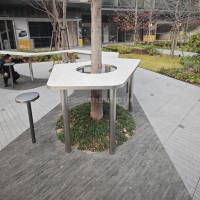Welcome to the website for landscape facilities products and knowledge.
How does the bin’s design ensure it remains easy to clean without water access?
In environments where water access is limited or unavailable, maintaining clean and hygienic bins can be a challenge. However, modern bin designs incorporate several innovative features to address this issue effectively.
1. Smooth, Non-Porous Materials: Many bins are now made from high-density polyethylene or stainless steel, which resist stains and odors. Their smooth surfaces prevent waste from sticking, allowing for easy wiping with a dry cloth or disinfectant wipe.
2. Removable Liners and Inserts: Some bins feature detachable inner liners or inserts that can be lifted out and cleaned separately. This eliminates the need for water-intensive scrubbing inside the bin itself.
3. Odor-Control Technology: Advanced bins include built-in charcoal filters or antimicrobial coatings that neutralize odors and bacteria, reducing the frequency of deep cleaning.
4. Hinged Lids and Hands-Free Mechanisms: Designs with foot pedals or motion sensors minimize direct contact, keeping the bin cleaner for longer periods. The lids also prevent spills and debris buildup.
5. Modular Components: Certain bins have removable parts, such as lids and bases, which can be easily disassembled for spot cleaning without requiring water.
By prioritizing these design elements, modern bins ensure hygiene and convenience even in water-scarce settings, making waste management more sustainable and efficient.
Related search:

Recommendation
An outdoor bar counter with stainless steel and terrazzo materials in an irregular shape